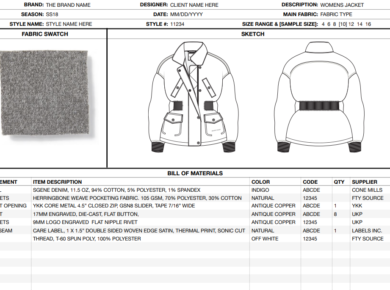The COVID-19 pandemic brought unprecedented challenges to the global fashion industry, dramatically impacting sourcing practices. From lockdowns halting production to shipping delays causing inventory issues, fashion retailers grappled with a multitude of challenges. As the world begins to navigate the post-pandemic landscape, retailers are faced with the pressing need to adapt and evolve their sourcing strategies to ensure business resilience and sustainable growth. Fashion retailers are now tasked with how to adapt their sourcing strategies to deal with new realities and ensure business resilience.
The Changing Sourcing Landscape
The pandemic exposed vulnerabilities in traditional sourcing models, such as over-dependence on specific regions or suppliers, lack of supply chain transparency, and inability to quickly react to changes in demand. As a result, fashion retailers have been forced to rethink their sourcing strategies, taking into account these key changes:
Supplier Diversification: With supply chain disruptions affecting certain countries more than others, the importance of diversifying the supplier base has never been clearer. Having a wide range of suppliers across various regions can help fashion retailers minimise risk and ensure a steady supply of products.
Local Sourcing: The pandemic has accelerated the shift towards local sourcing. By sourcing closer to home, retailers can reduce lead times, increase flexibility, and minimise the environmental impact of long-distance shipping.
Digitalisation: With travel restrictions and social distancing measures in place, the use of digital tools for sourcing has increased. Technologies such as virtual showrooms, AI-powered sourcing platforms, and blockchain for supply chain transparency have become more prevalent.
Strategies for Fashion Retailers
1. Diversify Your Supply Chain: Expand your supplier network to include a wider range of countries and regions. This not only reduces dependence on a single source but also allows you to take advantage of regional strengths, such as unique products or cost-effectiveness.
2. Embrace Local Sourcing and Nearshoring: Consider sourcing more products locally or from nearshore countries. This can help reduce shipping times and costs, respond quickly to changes in demand, and lower carbon emissions.
3. Invest in Digital Tools: Leverage technology to streamline the sourcing process. AI can help identify the best suppliers, virtual showrooms can replace physical trade shows, and blockchain can ensure supply chain transparency.
4. Build Strong Supplier Relationships: Building strong relationships with your suppliers can ensure better collaboration, quality control, and problem-solving in the event of disruptions. It also supports ethical sourcing practices.
5. Prioritise Sustainability: The pandemic has underscored the interconnection between social, economic, and environmental sustainability. Ensure your sourcing practices align with sustainability goals, including ethical labour practices and minimal environmental impact.
While the post-COVID sourcing landscape presents significant challenges, it also provides opportunities for fashion retailers to rethink their strategies, embrace innovation, and build more resilient and sustainable supply chains. By taking a proactive approach, retailers can navigate this new landscape successfully, ensuring business continuity and driving long-term growth.






